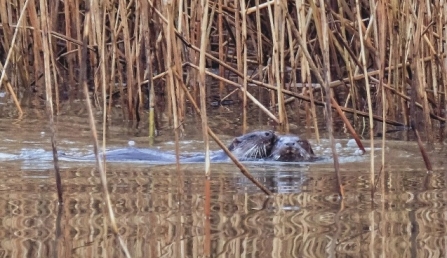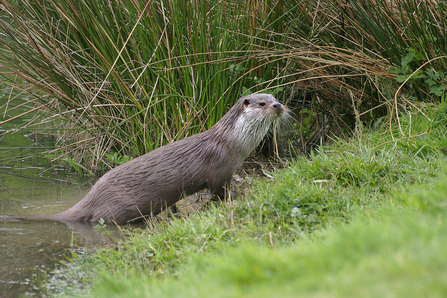A mother otter and two cubs were spotted for the first time at our Wheldrake Ings reserve near York in January, suggesting they are breeding again in the area in what is thought to be the first time in years.
The good news was confirmed by an otter being caught on one of our wildlife cameras at the reserve in early March – skittering away across the ice during the big freeze!


